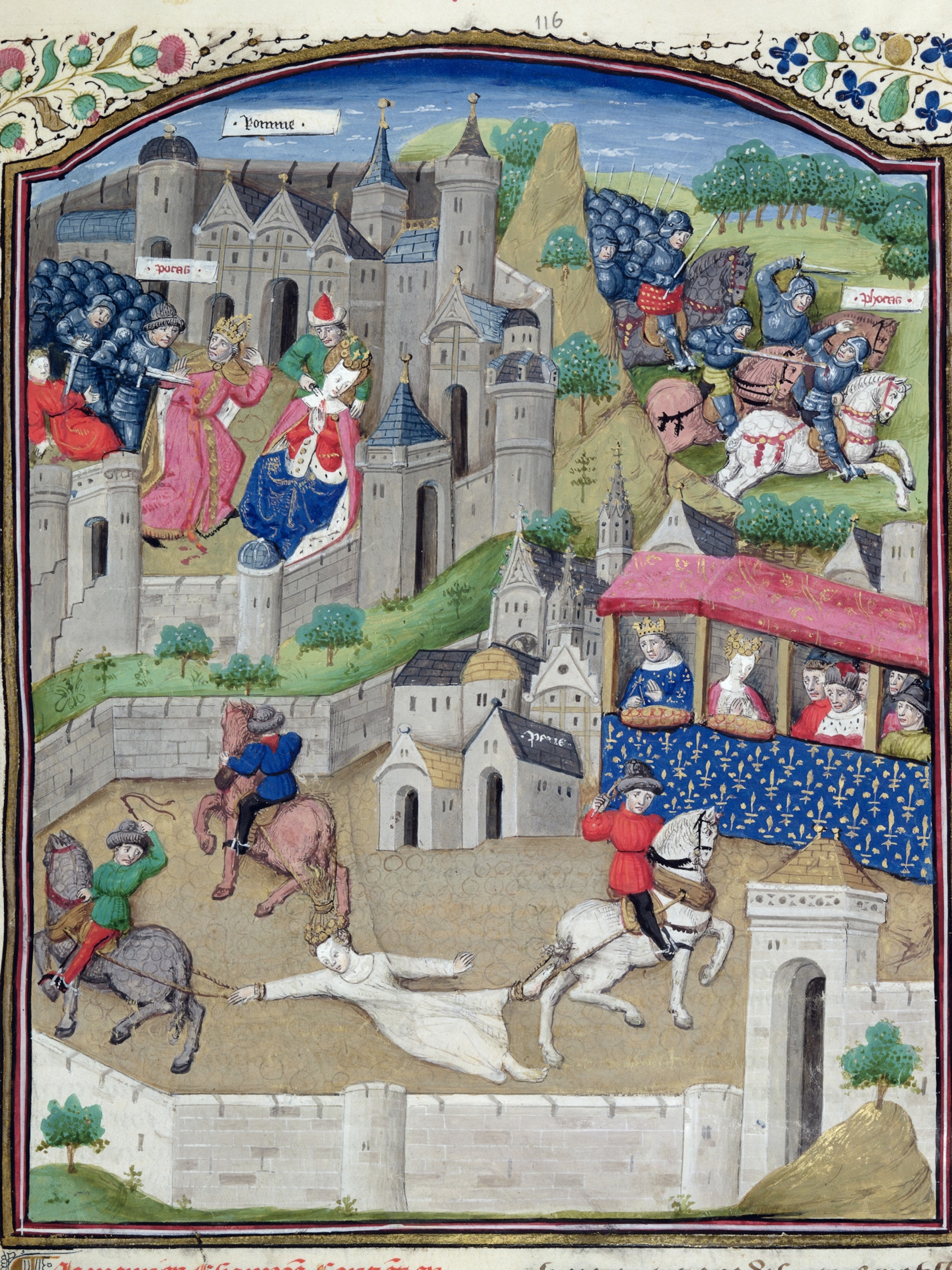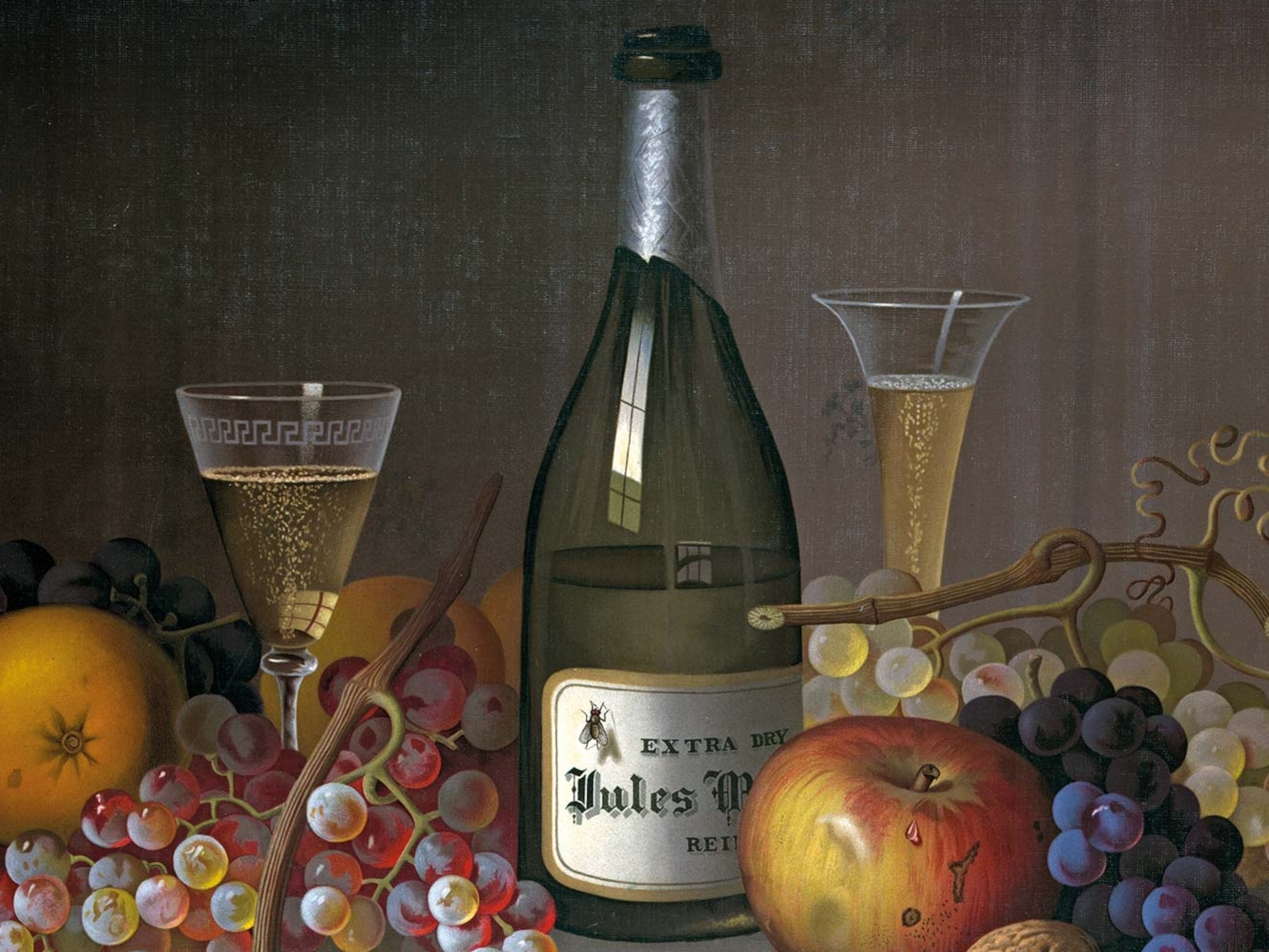Meet 5 of the fiercest queens from medieval times
Savvy, tenacious, and ready to preserve their family’s power at all costs, these formidable women left their mark on history.

During the turbulent, pestilent-ridden Middle Ages, kings dominated the Western world, fighting wars, making alliances, and aggressively holding onto their power. But hidden away in the annuls of history, five strong queens used their exceptional skills, political savvy, and tenacity to exert power in unexpected, and often disastrous, ways. Among them, several served as regents for their underaged sons (and grandsons and great-grandsons); one married not one but two influential kings and helped run their kingdoms (before divorcing them); and one ruled when her unhinged husband-king couldn’t. Here are their fascinating stories.
Queen Brunhilda of Austrasia
Born around 543 a.d., Brunhilda was a Visigothic princess who in 567 married the Frankish king Sigebert I, becoming the queen of Austrasia (which encompassed parts of present-day northern Germany, France, Belgium, the Netherlands, and Luxembourg). But there were some messy family relations. Her older sister, Galswintha, who had married Siebert’s half-brother Chilperic, was brutally murdered at the request of Sigebert’s mistress, Fredegund. Brunhilda launched 40 years of vicious warfare against her in revenge.
After Sigebert was assassinated by poisoned daggers circa 757 (probably on Fredegund’s orders) and Brunhilda was thrown into prison in Rouen, she managed to return to Austrasia where her young son, Childebert II, had been proclaimed king. She thus ruled as regent, essentially becoming Austrasia’s power behind the throne. Among other things, the adept leader repaired old roads, commissioned churches and abbeys, built fortifications, and restructured the army and tax system—remember, this was during the aftermath of the fallen Western Roman Empire.
When Childebert II died in 595 at age 26, Brunhilda resumed control as regent for her two grandsons. But this was no doting grandmother. Politically ruthless, she kept her favorite grandson busy with concubines so he wouldn’t marry and challenge her power.
This however, finally caught up with her. In 613, the son of her long-standing rival Fredegund accused the nearly 80-year-old queen of killing 10 Frankish kings and sentenced her to death. It is said that she was torn apart by wild horses and her remains were burned, leaving no trace of the spirited queen.


Queen Eleanor of Aquitaine
In 1137, 15-year-old Eleanor of Aquitaine’s father died, bequeathing to her the vast duchy of Aquitaine. And just like that, she became the most powerful—and most eligible—young woman in 12th-century Europe. She went on to become queen to two kings: Louis VII of France in 1137; and when that marriage failed 15 years later, Henry II of England, whom she eventually also divorced. Strong-willed and capricious, she participated actively in the administration of each kingdom and deftly managed her own domains.
Eleanor’s true grit, however, came after she sided with her children over her second husband in a revolt, and Henry arrested her. She spent over a decade under house arrest in England, invisible and powerless. But when he died in 1189 and her son, Richard the Lionheart, became king, she took on the greatest political role of her life, acting as regent when he set off on the Third Crusade. She successfully kept the kingdom intact, fighting off her power-hungry son John.
When she died in 1204 at the monastery at Fontevraud, the nuns wrote in their necrology: She was a queen “who surpassed almost all the queens in the world.”

Queen Blanche of Castile
Blanche of Castile, Eleanor of Aquitaine’s granddaughter, was dealt a challenging blow when her husband, the French king Louis VIII, died in 1226. Their 12-year-old son, King Louis IX (Saint Louis), was too young to rule, so she served as regent for 14 years. She quelled rebellions, fought territorial disputes, created local militias, and engaged in open warfare to support the rights of her son as well as to promote the unification of France (not to mention, preserve her own role in a world that didn’t support a woman ruler). When Louis IX came of age in 1236, she handed him a peaceful, flourishing kingdom but remained by his side as a fierce supporter and advisor.
But perhaps her greatest triumph occurred when she was 60 years old in 1248, and Louis marched off on Crusade, leaving her to rule the kingdom once again. When he was defeated and imprisoned, she sought his ransom. She also signed laws, presided over council meetings, and cared for Paris’s poor. When she died in 1252, Louis lost not only his mother but his greatest supporter.
Queen Margaret of Anjou
Strong-willed, determined, and beautiful, Margaret of Anjou was married in 1445 to the mentally unstable King Henry VI of England as part of a truce to the Hundred Years’ War between France and England. When Henry VI fell into a catatonic state, his cousin the Duke of York was named regent in place of Margaret, who had lobbied for it. Eventually, the king regained his mental acuity and the duke was removed as regent. This brought the simmering struggle between the houses of Lancaster and York to a boiling point, becoming known as the Wars of the Roses.
During this civil war, the indomitable queen was determined to uphold the right of her son, Edward of Lancaster, to inherit the throne. Even so, her efforts ultimately failed. She and her supporters were defeated in May 1471 at the battle of Tewkesbury. Edward was killed, and she was taken prisoner by the Yorkists and held for several years in the Tower of London. After her husband, who had been taken prisoner, died in the Tower of London (presumably murdered), the new king of France, Louis XI (her cousin), ransomed her, and she died penniless at the age of 52.
But this resolute woman lives on in four of William Shakespeare’s plays. In the third part of “King Henry VI,” he describes her: “She-wolf of France, but worse than wolves of France, / Whose tongue more poisons than the adder’s tooth.”

Queen Isabella I of Castile
At a time when men ruled kingdoms and their queens took care of house matters, Queen Isabella reigned by her husband King Ferdinand’s side. Known for her strong personality, determination, and willingness to make tough decisions, she helped develop administrative and legal reforms that worked to streamline the legal system, enhance the royal control over the Church, and strengthen the Crown’s power. She and Ferdinand also supported Christopher Columbus’s ambitious voyage in 1492 that led to the European discovery of the Americas and the tragic decimation of Indigenous tribes.
As a devout Catholic, she was determined to promote Catholicism—and this came at a tragic price. She and Ferdinand supported the Spanish Inquisition, which aimed to maintain religious and social unity by identifying and punishing heretics and conversos, Jews and Muslims who had converted to Christianity but were suspected of practicing their former faith in secret.
To learn more, check out Inside the Medieval World. Available wherever books and magazines are sold.
Related Topics
You May Also Like
Go Further
Animals
- How scientists are piecing together a sperm whale ‘alphabet’How scientists are piecing together a sperm whale ‘alphabet’
- Orangutan seen using plants to heal wound for first timeOrangutan seen using plants to heal wound for first time
- What La Palma's 'lava tubes' tell us about life on other planetsWhat La Palma's 'lava tubes' tell us about life on other planets
- This fungus turns cicadas into zombies who procreate—then dieThis fungus turns cicadas into zombies who procreate—then die
Environment
- This floating flower is beautiful—but it's wreaking havoc on NigeriaThis floating flower is beautiful—but it's wreaking havoc on Nigeria
- What the Aral Sea might teach us about life after disasterWhat the Aral Sea might teach us about life after disaster
- What La Palma's 'lava tubes' tell us about life on other planetsWhat La Palma's 'lava tubes' tell us about life on other planets
- How fungi form ‘fairy rings’ and inspire superstitionsHow fungi form ‘fairy rings’ and inspire superstitions
- Your favorite foods may not taste the same in the future. Here's why.Your favorite foods may not taste the same in the future. Here's why.
- Are the Great Lakes the key to solving America’s emissions conundrum?Are the Great Lakes the key to solving America’s emissions conundrum?
History & Culture
- These were the real rules of courtship in the ‘Bridgerton’ eraThese were the real rules of courtship in the ‘Bridgerton’ era
- A short history of the Met Gala and its iconic looksA short history of the Met Gala and its iconic looks
- Meet the ruthless king who unified the Kingdom of Hawai'iMeet the ruthless king who unified the Kingdom of Hawai'i
- Hawaii's Lei Day is about so much more than flowersHawaii's Lei Day is about so much more than flowers
Science
- Why ovaries are so crucial to women’s health and longevityWhy ovaries are so crucial to women’s health and longevity
- Orangutan seen using plants to heal wound for first timeOrangutan seen using plants to heal wound for first time
Travel
- Why this unlikely UK destination should be on your radarWhy this unlikely UK destination should be on your radar







